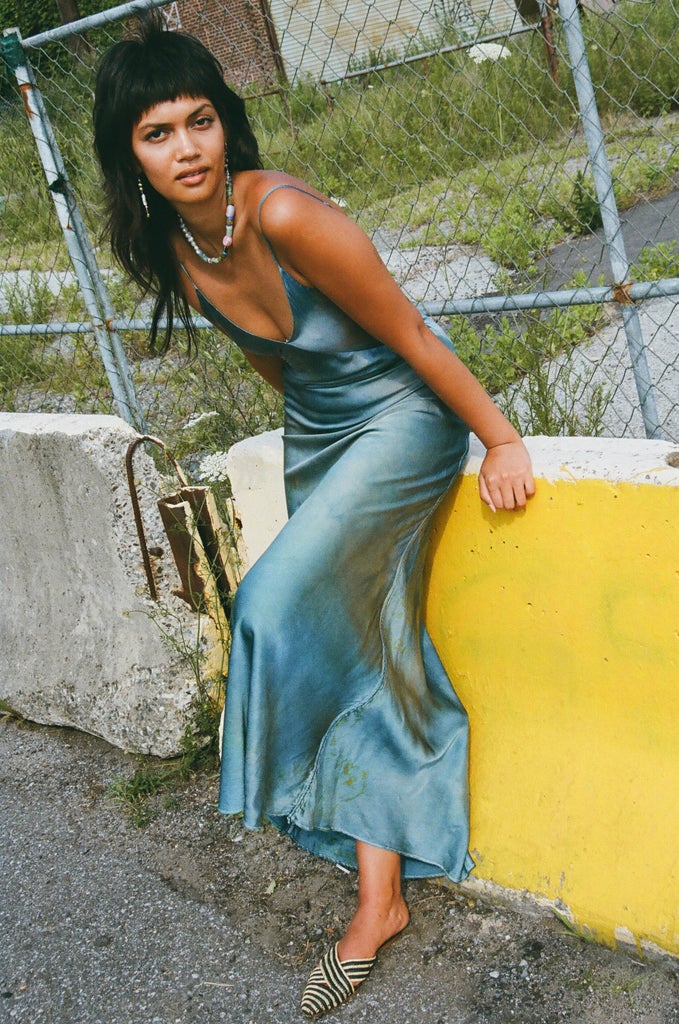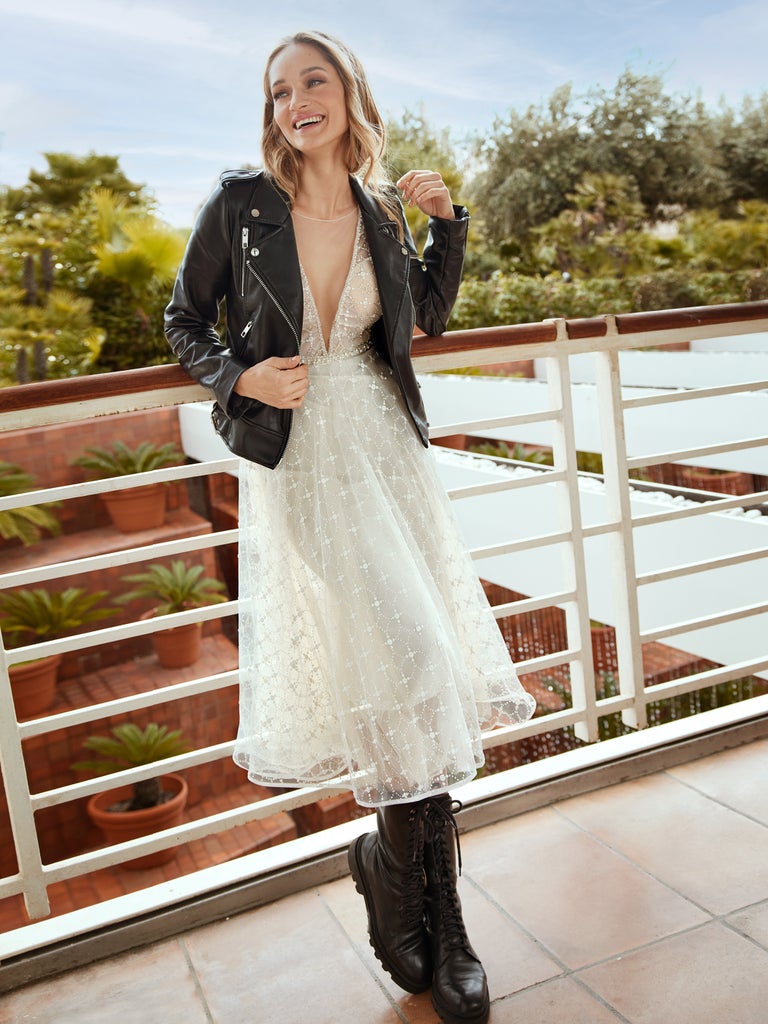Welcome to Aisle Style, a week-long series that features the most untraditional wedding fashion trends, coolest bridal designers to know, and brides who walk to the beat of their own “Canon In D.” Buck the tradition and say I do to personal style — the aisle is yours.
The wedding industry is built on the idea of brides buying a once-in-a-lifetime dress that they’ll only wear once. But as conversations around overconsumption in fashion continue to intensify, brides are rethinking the “wear once, store forever” mentality. “Now that there is a wider cultural movement towards sustainability, more and more people are becoming aware of it,” says Alexis Walsh, a fashion designer and bride-to-be. “And they’re realizing that a wedding dress is the perfect opportunity to be able to have a more sustainable garment that will live with them.”
Over the pandemic, the secondhand market got a boost that is pushing the $29 billion market to nearly double by 2023, according to the retail analytics firm GlobalData. In turn, designers and bridal retailers are looking for ways to expand their services or offer new ones for brides looking to repurpose their dress after saying “I do.” The bridal brand Pronovias announced its in-house alterations program in 2021, while secondhand formalwear start-up Queenly has continued to expand its special-occasion selection to include looks suitable to tie the knot.
“People are thinking about different ways that a dress can be worn and thinking about things in a sustainable kind of way,” says Christina Tung, the founder of the contemporary brand SVNR. “It’s not just like you’ll wear it once and then just have it in your closet.”
From selling to re-dyeing the dress, here are some options brides have available to give their dresses a new life after saying “I do.”

Sell The Dress
“[Formalwear] has been a very old-school industry for so long,” says Kathy Zhou, co-founder of Queenly. Unlike traditional luxury resale, it is often a lot more complicated for brides to give their wedding dress another life. “I’m trying to sell my dress,” says Kaileen Gaul-Suneson, who got married in September 2021. “Trying on in-person is such a ‘you gotta say yes to the dress’ part of the wedding industrial complex concept that I think a lot of people want to experience.”
Gaul is considering selling her dress on Still White, a secondhand online service carrying brands such as Pronovias, Maggie Sottero, and Galia Lahav with options ranging from $40 to $60,000. For Queenly co-founder Tricia Bantigue, giving brides access to dresses they would have otherwise been unable to afford is one of the biggest rewards: “Usually, dresses are anywhere from 20% to 70% off retail. I never want anyone to not have their Cinderella moment because they can’t afford it.”
Similarly, to Still White and Queenly, other secondhand platforms have expanded their formalwear categories to include wedding dresses, including TheRealReal, Poshmark, ASOS Marketplace, making it easier for brides to list, sell, and ship their dresses after their nuptials.

Re-Dye The Dress
For brides who want to keep and rewear their wedding dress, it has become popular to dye it a different color. In 2021, when wedding ceremonies and parties were resuming amid the pandemic, several brides reached out to Tung with a custom request: “They were interested in SVNR’s slip dress in white and asked if they could come back to see if they could dye it after.” With silk being one of the easiest fabrics to re-dye, Tung says that it was a simple request to accommodate. Now she is offering dyeing services for brides who similarly wish to change the color of their dress after the nuptials.
Alexis Walsh has the same idea for her wedding look. The fashion designer is making her own outfit for the big day, choosing silk to make the process of dyeing the dress easier following the ceremony. “After the wedding, I’ll probably dye it a really beautiful, rich, dark color, like navy,” she says. “And then I’ll have it as just a really nice, easy navy slip dress.”
For brides who don’t want the casual look of a silk slip dress, Tung recommends finding someone who specializes in dyeing the particular fabric of the dress, whether it’s a brand or a textile company. She also suggests asking if the brand or designer offers re-dyeing services ahead of purchasing the dress, if that’s something that a bride knows she is interested in.

Alter The Dress
While today’s brides are opting for more wearable options — including bridal suits and mini dresses — for their nuptials, others still prefer the grandeur of a princess dress. While many brides turn to independent tailors to alter their gowns into shorter dresses following the wedding, now more and more brands are offering these types of alteration services, signaling a push toward a more circular wedding industry.
Take, for example, the Spanish bridal brand Pronovias, which is offering to give wedding dresses a makeover for free. The process is simple: Brides can opt to buy one of the 50 available “Second Life” options from the brand’s website or stores and return it after their wedding day for bespoke alterations curated by artistic director Alessandra Rinaudo.
After decades of one-of-a-kind wear-once mentality across the wedding industry, it seems both brides and designers are ready to embrace the versatility and wearability of bridalwear. “People don’t think of all the different options out there,” says Tung. “Hopefully, it’s evolving.”
Like what you see? How about some more R29 goodness, right here?
Meet The Designers Of The Coolest Wedding Looks

No comments:
Post a Comment